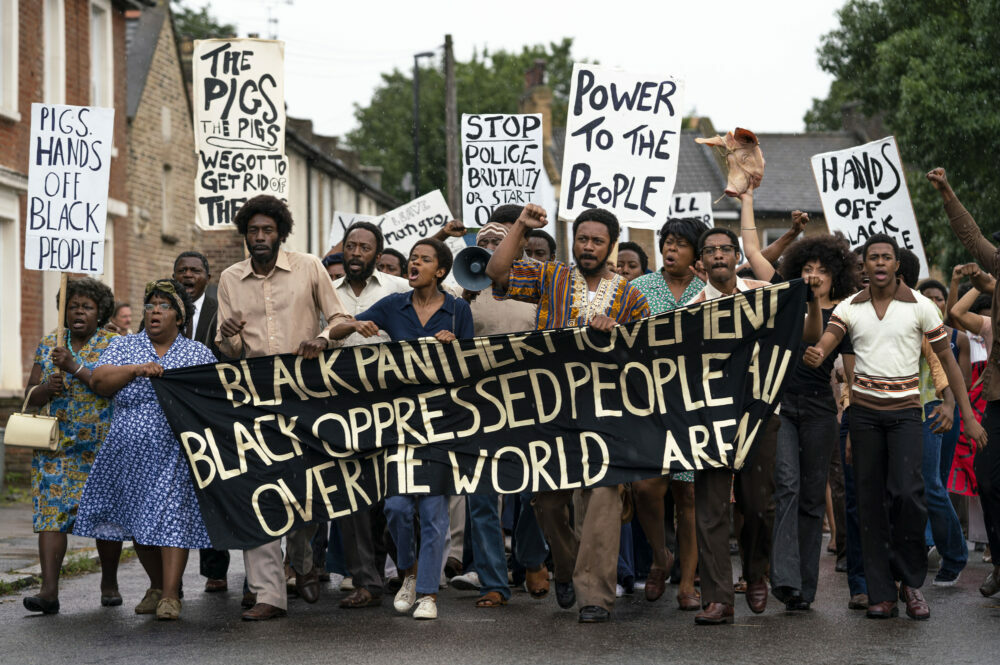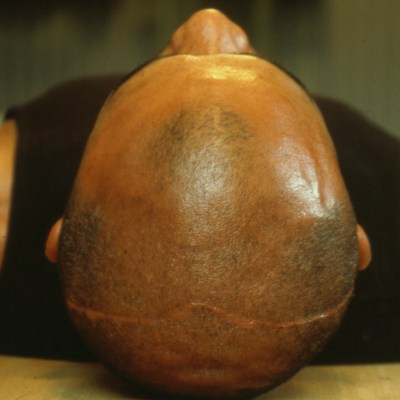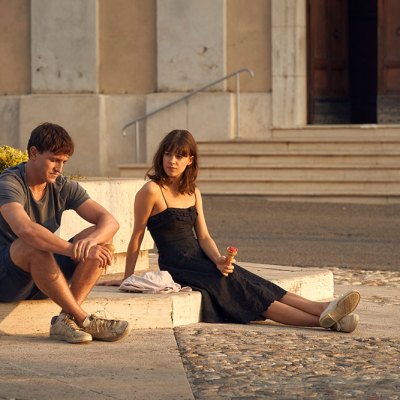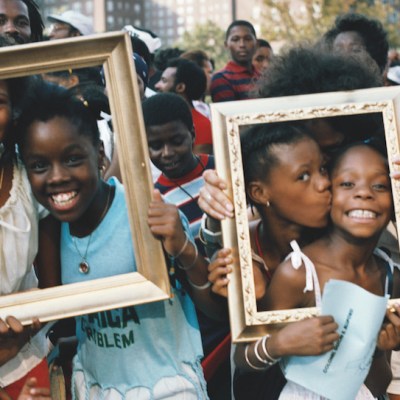In the first two episodes of Steve McQueen’s quintet of films, collectively titled Small Axe, the artist and film-maker points his lens at two distinct but related spaces of Black social pleasure: a Caribbean restaurant in Notting Hill in the late 1960s, and a house party in the same area a decade later. Both of these are, to varying degrees, embattled, from without and within.
The first film, Mangrove, takes its title from the historic Mangrove Restaurant, established on All Saints Road in 1968 by the community activist Frank Crichlow. It tells the story of the ‘Mangrove Nine’, a group of activists who led protests over the campaign of racist harassment against the restaurant by local police. In 1970 they were charged with incitement to riot, which led to a landmark 55-day trial.
In a masterpiece of period detailing, McQueen conjures vivid performances from his cast. Letitia Wright’s turn as Altheia Jones-LeCointe rightly presents this sometimes overlooked activist as a leader of the British Black Panther Movement and as an eloquent and persuasive activist. Malachi Kirby’s depiction of the young Darcus Howe evokes the memorable oratorical style of this Trinidadian radical, who would go on to contribute much to our contemporary political landscape. The domestic tensions between the sometimes ethereal Howe and his then-partner Barbara Beese (Rochenda Sandall) as well as Shaun Parkes’ depiction of the embattled Crichlow in stages of anger and exasperation all add emotional texture to the film. These characters converge and interact within what should be the ‘safe space’ of the Mangrove where they can gather and celebrate Calypso and ‘Caribbeaness’, while enjoying ‘crab and callaloo’ lovingly prepared by Aunt Betty (Llewella Gideon).
It is this site of collective pleasure that is constantly violated by local police officers spearheaded by PC Frank Pulley, played as a racist sociopath by Sam Spruell. Pulley serves in the film as a means of representing both the casual and the structural racisms that informed policing methods. The language used by the character also hints at a narrative that McQueen chooses to invoke only obliquely, involving Crichlow’s former club, the El Rio. Pulley refers to the El Rio as a site for ‘degenerates […] ponces, nonces, tarts’, alluding to its notoriety as a key location in the Profumo affair – the place where Christine Keeler met her lover, the jazz singer Lucky Gordon. McQueen also choses to steer our attention away from how fashionable the Mangrove was, counting Jimi Hendrix, Nina Simone, Bob Marley and Vanessa Redgrave among its clientele. Instead, he depicts a space suggestive of a community-based ‘start-up’, an act of creative licence that draws us more fully into a drama of assault on a grass-roots enclave by a vindictive racist state.
The courtroom scene in Mangrove (2020; dir. Steve McQueen). Photo: Des Willie/BBC; © McQueen Limited

In a scene reminiscent of McQueen’s Hunger (2008), an elegantly framed and static shot sees Howe implore Crichlow to ‘take it to the streets’ in response to continued police harassment. It is the resultant demonstration, and the violent police response, that led to ‘The Mangrove Nine’ being charged at the Old Bailey. The film from this point is positioned firmly within the cinematic genre of the courtroom drama and in its staging, dialogue and attention to ritualistic detail it sits alongside another cinematic courtroom epic of this year, Aaron Sorkin’s The Trial of the Chicago 7.
The police appear only fleetingly in Lovers Rock, when a patrol car cruises past an open door – an implied threat from the world beyond the walls of the living room-cum-dance floor where the party takes place. This, however, is not the film’s key concern. Here McQueen allows his lens to linger on the spectacle of shared Black pleasure, itself a kind of act of resistance. The performances in this film turn inwards, with a focus in particular on the gender dynamics at play. The action unfolds against a sonic landscape provided by the popular Black music of the period, including the Reggae genre of Lovers Rock after which the film is titled.
Micheal Ward as Franklyn and Amarah-Jae St Aubyn as Martha in Lovers Rock (2020; dir. Steve McQueen). Photo: Parisa Taghizadeh/BBC; © McQueen Limited

The central narrative is familiar, even mundane. A young woman, Martha (Amarah-Jae St Aubyn), sneaks out of her strict Christian family home to attend an all-night party where she meets Franklyn (Micheal Ward). The two strike up a romantic friendship that evolves over the course of an evening, along with the other relationships between party-goers. In one particularly dramatic sequence, we witness female rivalries suddenly turn into solidarities in the face of an attempted rape. The film derives much of its power, however, from the way that this narrative is interwoven with music – two songs in particular, which provoke diametrically opposing cinematic moments.
The first is Janet Kay’s ‘Silly Games’, a hit from 1979. McQueen creates a montage of tightly framed shots of slowly gyrating interlocked male and female bodies – dancing as a kind of heterosexual fertility ritual – interspersed with wider shots of crowds in ecstatic motion, and zoomed-in details of moisture dripping down walls. Interestingly, as we witness the visual interplay of male and female bodies, the sonic space is also filled with overlapping but competing female and male voices. In Janet Kay’s classic track, the singer reaches notes terrifyingly high on the soprano range. At these moments in Lovers Rock we see women occupying the centre of the screen, rejoicing in vocal ranges inaccessible to men. Men vie for attention through the scene, notably through the amplified voices of the male DJs, but this is predominantly seen as a feminised space where women’s expressions of pleasure, yearning and loss are foregrounded.
A still from Lovers Rock (2020; dir. Steve McQueen). Photo: Parisa Taghizadeh/BBC; © McQueen Limited

Later in the party the 1976 dub classic ‘Kunta Kinte’ by the Revolutionaries is placed on the record deck, and we witness an different ecstatic moment. Suddenly women fade to the periphery and mostly male bodies fill the screen, moving with abandon. Their dance moves, although unchoreographed, seem to quote the communal, ritual dances associated with pre-colonial Africa, inspired by the song’s invocation of Kunta Kinte – the captive African in Roots, Alex Haley’s novel of the same year, which stoked the political awakening of a generation of young Black people in the late 1970s.
In the closing moments of the film, however, we are reminded of the exterior hostilities of the West London of 1980. We see Franklyn and Martha preparing to extend their romantic encounter in Franklyn’s deserted workplace, but they are interrupted by Franklyn’s boss. In a moment that is both subtle and telling, Franklyn is drawn to one side and discretely told ‘not to bring his “Doris” into the Garage’ and then called a ‘good boy’. For all his ‘alpha-male’ status within the space of the party, in the world beyond Franklyn remains a ‘boy’, and is treated as such.
Small Axe is broadcast on BBC One.



